100+ Interesting Dominican Republic Facts To Know! What is the Dominican Republic Known For?
Facts: The Dominican Republic is the most visited destination in the Caribbean. However, did you know that kissing in public could land you in some serious trouble?
Read these riveting, fun, and interesting Dominican Republic facts below to find out!
You will learn about the people of Dominican Republic, the history, culture, food, and everything there is to know about this beautiful country.
Speaking of which — is Dominican Republic a country? What is the Dominican Republic known for? What’s it like traveling to Dominican Republic?
Let’s find out ⬇️
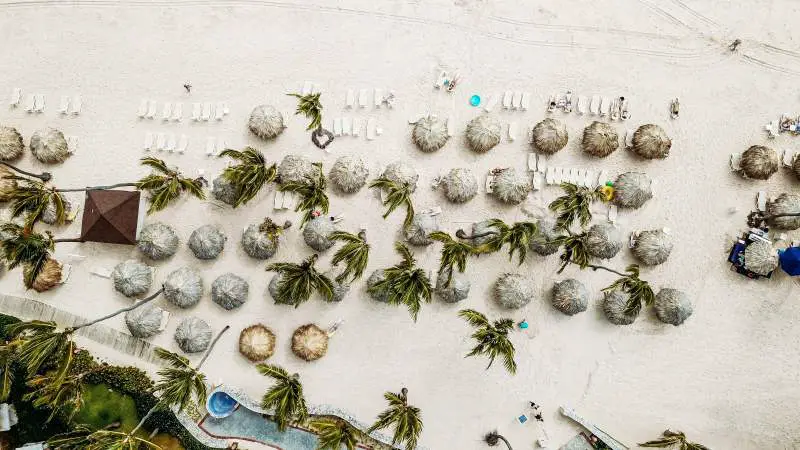
What is the Dominican Republic known for?
Surrounded by the Atlantic Ocean and the Caribbean Sea, the country’s tropical climate, beautiful scenery, and eclectic mix has been attracting visitors from around the world.
The Dominican Republic is mostly known for its warm people, blue ocean waters, white sand beaches, intriguing history, and rich culture. However, not much else is known about this tropical island sanctuary.
Keen to know more?
Here are a host of fun facts about the Dominican Republic that you may want to know out of interest or before you go.
>> Read next:
- The Dominican Republic is one of the cheapest islands to visit in the Caribbean and around the world. See the full list here.
- 100+ fun and interesting facts about Mexico worth knowing
- Is Aruba Flamingo Beach worth $125?
- Is Bora Bora a country?
- 100 super interesting facts about Hawaii
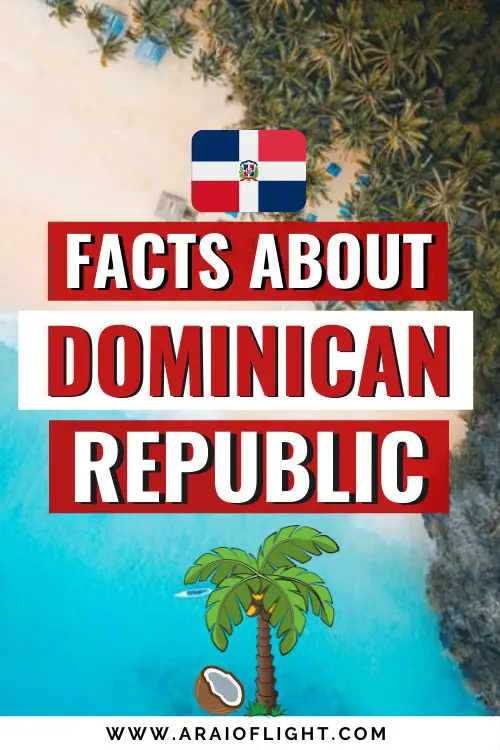
First up, some….
Quick Facts about Dominican Republic
Official name: The Dominican Republic (Spanish: República Dominicana)
Country: Yes
Nickname: Pearl of the Antilles or the D.R.
Capital city: Santo Domingo
Continent: North America
Time zone: Atlantic Standard Time (GMT-4)
Coordinates: 18.7357° N, 70.1627° W
Land Area: 18,792 sq miles (48 442 km²)
Provincias: 31
Founded: 27 February 1844
National Day: 27 February (Independence Day)
Lowest point: Lake Enriquillo (-46 m or 151 feet below sea level)
Highest Point: Pico Duarte (3,098 m or 10,164 feet above sea level)
Population: 11,150,895 (2023)
Life expectancy: 74.65 years
Official languages: Spanish
Ethnicity: Mestizo or Multiracial 72%, White Dominican 16%, Black Dominican 11%
Religion: Christianity
GDP: 98.95 billion USD (2023)
Median household income: USD 777
Currency: Dominican Peso
Major Industries: tourism, sugar production, ferronickel and gold mining, textiles, tobacco
Annual visitors: 8.5 million (2022)
Government: Unitary presidential republic
Area code: 809, 829, and 849
Electricity: 120V
Country Motto: “Dios, patria, libertad” (God, fatherland, liberty)
National bird: The Palmchat (Dulus dominicus)
National flower: The Bayahíbe Rose (Pereskia quisqueyana)
National anthem of the DR: Quisqueyanos valientes (Valiant Quisqueyans)
Next, let’s get into these….
Interesting Dominican Republic Facts
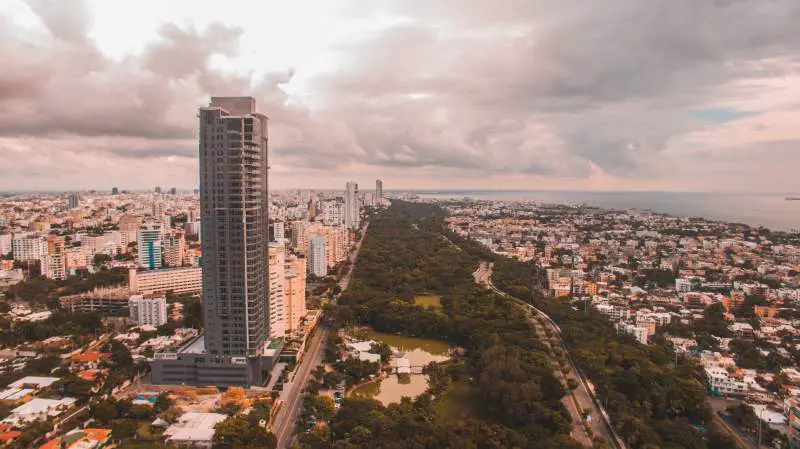
Where is Dominican Republic located
Located in the Caribbean Sea in the Greater Antilles archipelago, the Dominican Republic is on the island of Hispaniola.
It is bordered in the north by the Atlantic Ocean, to the south by the Caribbean Sea. To the east of the island lies Puerto Rico, and to the west is Cuba.
Cuba, Jamaica, Hispaniola, and Puerto Rico are referred to as the Greater Antilles.
Republica dominicana shares the island with Haiti
The country occupies the eastern two-thirds of the island of Hispaniola, sharing the rest of the island with The Republic of Haiti.
An international border, extending from the Atlantic Ocean in the north to the Caribbean Sea in the south, separates the two island nations. The 391 km border was agreed upon as part of the 1929 Dominican-Haitian border treaty.
Hispaniola is one of only a handful of islands that are shared by two countries.
Dominican Republic is derived from Santo Domingo, the capital city, which was named for Spanish Saint Domingo de Guzmán, the founder of the Dominican Order.
What continent is Dominican Republic in?
World region: North America
Geographical Coordinates: 18.7357° N, 70.1627° W
The international dialling code: 809
You may be wondering….
Is Dominican Republic a country?
Yes. The Dominican Republic is a country located on the Caribbean island of Hispaniola in the Greater Antilles archipelago of the Caribbean region.
Is Dominican Republic part of USA?
No. The Dominican Republic is an independent country in the Caribbean Sea and is NOT a part of the USA.
The Dominican Republic achieved independence in 1844, but was occupied by the United States in 1916 until 1924.
As a result of its close diplomatic relations with the United States since 1884, many incorrectly assume that the Dominican Republic is a US territory. However, the two are independent countries with separate governments.
How big is Dominican Republic?
The country extends across an area of 18,705 miles2 or 48,320 km2, making it the second largest Caribbean country after Cuba and 131st in the world.
The country’s area includes several smaller islands offshore the likes of Saona, Beata, and Catalina.
Largest cities:
- Santo Domingo (2,201,941)
- Santiago de los Caballeros (1,200,102)
- Santo Domingo Oeste (701,269)
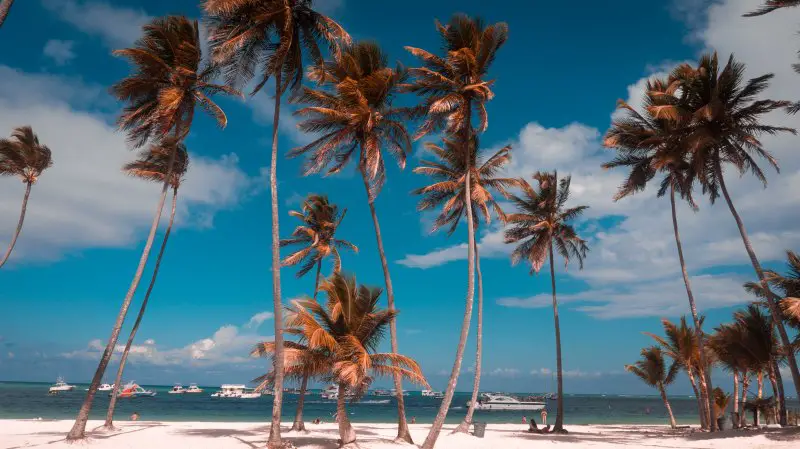
Republica Dominicana population
The current population of the Dominican Republic is 11,150,895 based on the latest United Nations estimates, making it the 86th most populous country in the world.
The population has more than doubled in the past 50 years, with the population density at 222 per square kilometre (or 576 people per square mile) which ranks 43rd in the world.
The population growth is 1.1% per year
Demographic statistics in 2023:
- One birth every 2 minutes
- One death every 8 minutes
- One net migrant every 18 minutes
- Net gain of one person every 5 minutes
The weather is described as endless summer
The Dominican Republic experiences a tropical maritime climate with little seasonal variation in temperature experiencing warm and sunny conditions for most parts of the year.
That’s over 300 days of sunshine.
The average temperature year-round is 77 degrees. The rainy season is late spring into early fall with the region rarely affected by hurricanes. However, sever thunderstorms are experienced between June and October.
Terrain of the Dominican Republic
The diverse geography of the country is made up of rugged highlands, mountains, rainforest, and savannah with fertile valleys interspersed.
The mountains divide the country into central, northern, and southwestern regions. The northern region includes the Cordillera Septentrional, the Cibao Valley, which is the country’s major agricultural area; and the Samaná Peninsula.
The central region includes the Cordillera Central range extending right into Caribbean Sea.
The coastal plain, with its sugar plantations, are made up of a series of limestone hills that gradually rise to a height of 330 feet.
The area includes 800 miles (1,288 kilometers) of coastline famous for its white-sand beaches, warm waters and rocky cliffs.
The main river is the Yaque del Norte, which starts at Pico Duarte and empties into the Bahia de Monte Cristi on the northwest coast.
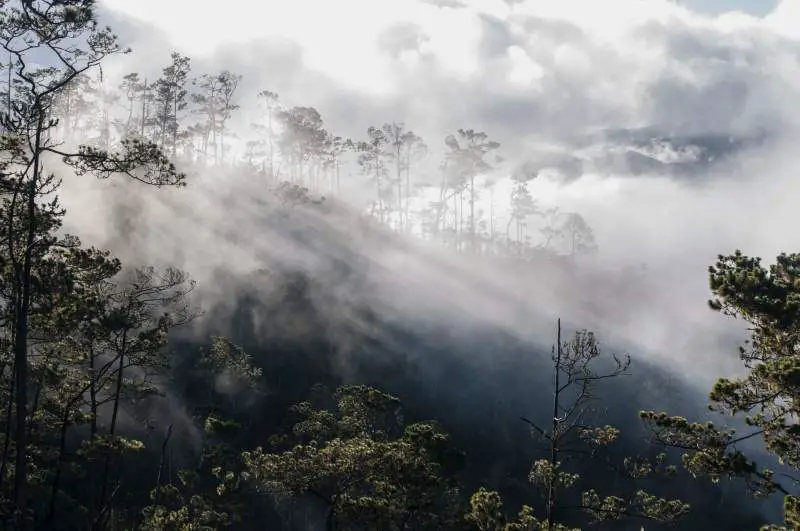
I’ve got plenty more amazing Dominican Republic facts for you below…..
Pico Duarte is the highest point in the Dominican Republic.
Standing at an elevation of over 10,414 feet or 3,175 meters, Pico Duarte is not only the highest peak in the Dominican Republic, but also all the Caribbean islands. The summit of alpine forests welcomes over 3,000 climbers who make the ascend each year.
Lago Enriquillo is the world’s largest salt lake and the lowest point in the Caribbean.
Another fascinating Dominican Republic fact is that it not only contains the highest point in the Caribbean, but also the lowest point, Lago Enriquillo at 150 feet or 46 metres below sea level.
Lake Enriquillo is a hyper-saline lake covering over 300 square kilometers and a diverse range of wildlife including flamingos, iguanas, and the largest population of American crocodiles.
The mean elevation of the island is 424 metres.
Republica Dominicana is home to unique precious stones found nowhere else.
If you’ve watched Jurassic Park, you’ll recall a scene with the amber stone and the prehistoric mosquito preserved inside. That is actually real and this fossil tree resin can be found in the Amber Museum in Puerto Plata in the Dominican Republic.
The country is home to two unique endemic stones that can’t be found anywhere else in the world:
- Dominican Amber
- Larimar
Laritmar is a blue, semi-precious stone with coloration that varies from light-blue, green-blue to deep blue. It most closely resembles turquoise, and it is called “larimar” because it resembles the color of the Caribbean Sea (or mar).
Be sure to let me know what are some of your favorite facts Dominican Republic facts. Keep scrolling to learn more.
Dominican Republic Culture facts
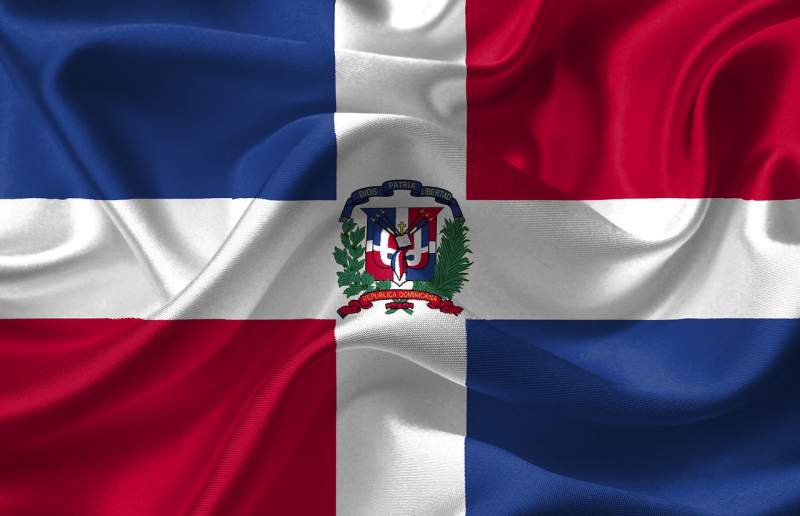
Despite its size and remote location as an island, the region and its culture has been influenced by many parts around the world.
As a result of centuries of Spanish presence, Dominican culture is based on the culture of Spain. The fusion of European, African, and Taino traditions and customs contributed to the development of the culture today. The European inheritances include ancestry, language, traditions, law, the predominant religion and the colonial architectural styles
Family, music, food, and sport are of great importance in the culture and its people. Now let’s learn about some interesting facts about Dominican Republic culture.
The Dominican Republic flag is the only flag in the world that uses the image of a Bible
Adopted on November 6, 1844, the flag of Republica Dominicana is one of the oldest flags in the world having its roots in the Haitian flag of the 19th century.
Meaning of the Dominican Republic flag:
The colors and shapes used in the national flag are national symbols. A large white cross, a religious symbol of salvation, divides the flag into four quarters.
It has three main colours — red, white, and blue with the coat of arms at the center. The blue rectangles represent freedom while the red sections are a symbol of the blood of the people who fought for the country’s independence.
>> Read next:
The countries with the most beautiful flags in the world
The main religion in the Dominican Republic is Christianity
It is also the official religion of the Republica Dominicana making up 80% of the population. 18% of people are unaffiliated with any religion and the balance is muslim. There has always been religious freedom throughout the entire country.
The national dish of the Dominican Republic is La Bandera
La Bandera or “the flag” is the traditional meal of stewed meat, red beans, and rice. It is so popular that you’re almost guaranteed to find it eaten at least once a week in every Dominican household.
There is a variety in the food because of the influences from the many ethnicities as well as other countries including Cuba, Mexico, Lebanon, and Latin America.
Tostone or small, fried plantain patties, are often a side dish at meals.
The cuisine is a good mix of Spanish, African, and Middle Eastern flavours.
Other popular dishes of Dominican Republic worth trying include Habichuelas Guisadas which is a stewed bean dish, Pollo Guisado which is a braised chicken, and Bizcocho cake.
>> Read next:
35 of the weirdest foods around the world
The national sport of Dominican Republic is baseball
Baseball was introduced to the region in the 1800s and has become hugely popular and somewhat of an obsession since.
It is the national sport and a national pastime with many of the world’s best players hailing from the Dominican Republic, including David Ortiz, Pedro Martinez, and Sammy Sosa.
In facts Dominican republic, 40% of the players in the American professional baseball league are from here.
Dominican Republic History facts
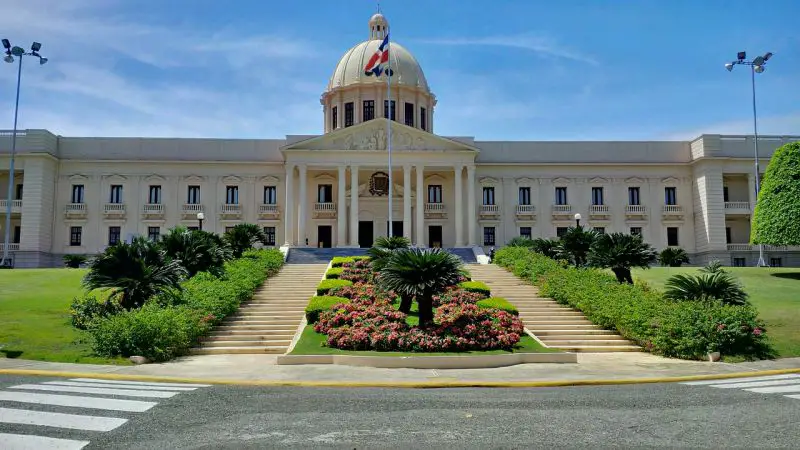
The Dominican Republic has a highly interesting and long history. Let’s discuss this…..
The island was originally inhabited by the Native American Tainos
…. in the 7th century, who called their island Ayiti, Bohio, or Quisqueya.
Christopher Columbus in pursuit of discovering India, arrived here on the 5th of December 1492. He named it La Isla Española, later Latinized to Hispaniola, meaning Little Spain, and Spain began to colonize the area immediately thereafter.
The Taino were a peaceful subgroup of Arawaks who had their origins in the tropical forests of South America. Columbus encountered an island of over 500,000 Tainos living in permanent villages and subsisting on agriculture.
The Tainos no longer exist today. They are believed to have been exterminated by disease and the genocide incurred on the indigenous population of the Americas, following Columbus arrival.
The Dominican Republic was ruled by the Spanish for over 300 years.
Hispaniola became a springboard for more Spanish exploration and conquest throughout the New World.
The city of Santo Domingo was established in 1496 and was the first seat of the Spanish colonial rule and became the site of the first permanent European settlement in the Americas.
The demise of Indigenous people on the island, resulted in Spain using slaves to work the plantations. The Atlantic slave trade began in the early 1500s and Dominican Republic was the first place to transport African slaves in the Americas.
The Spanish abandoned Hispaniola for more economically promising areas such as Cuba and Mexico, For nearly two hundred years Hispaniola remained in a state of disorganisation and depression.
The Treaty of Ryswick gave the western portion of the island to France in 1697. That region, called Haiti began to prosper by producing sugar and cotton.
By 1795 Spain ceded the entire island to France.
In 1809 the eastern part of Hispaniola reverted back to Spanish rule.
In November 1821, Santo Domingo declared its independence from Spain.
The country was called Santo Domingo, after Saint Dominic and the people referred to as Dominicans. After gaining independence, the people called their country La República Dominicana after General Santo Domingo.
In 1822 the armies of Haiti invaded and gained control of the entire island. It was then part of a unified Hispaniola until 1844.
The Dominican Republic gained independence on 27th of February 1844.
The Dominican Republic became a nation on 27 February 1844 when a group of revolutionaries seized power from Haiti.
The leader of the Dominican independence movement, Juan Pablo Duarte, entered Santo Domingo and declared independence from Hispaniola calling it the Dominican Republic.
The day is celebrated as a national holiday with carnival celebrations held in the city of La Vega comprising parades, street dancing, food festivals, and music. The El Carnaval de la Vega festival signifies the victory over evil with many wearing devil masks in the procession.
The emerging nation struggled, going in and out of political and economic chaos. The United States invaded the Dominican Republic in 1916 and occupied it until 1924.
In 1930 General Rafael Leonidas Trujillo Molina established a dictatorship, and soon after massacred over 20,000 Haitians living in the Dominican Republic. Trujillo was assassinated in 1961 and Juan Bosch was elected in a democratic election.
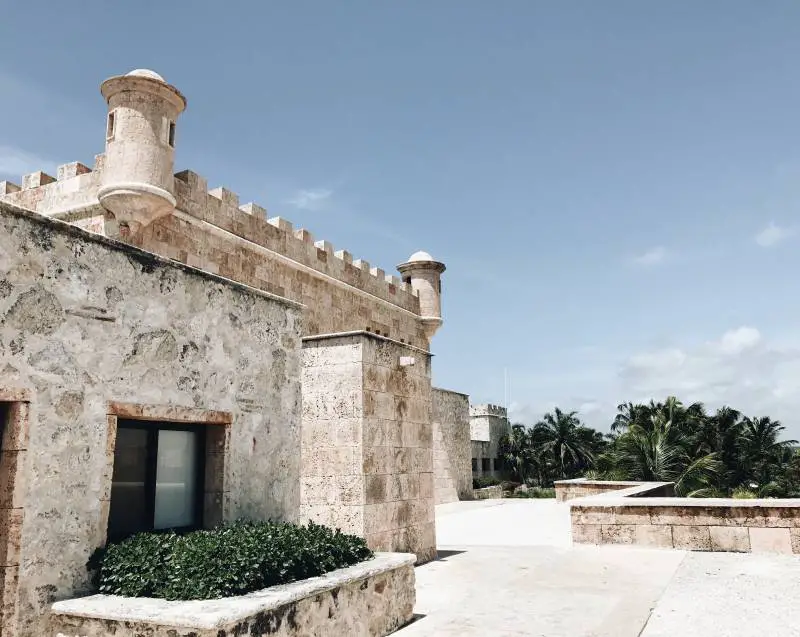
Continue reading for even more interesting facts about Dominican Republic…
The capital of Dominican Republic is Santo Domingo
A couple of interesting Santo Domingo facts of Dominican Republic:
It is the oldest continuously inhabited city in the New World, established by Spain in 1496. Santo Domingo became the base of Spanish expeditions and gateway to the Caribbean where Spanish ships set out to explore and colonize other parts of the region.
Santo Domingo became the capital of the newly independent Republica Dominicana in 1844.
Located on the southeast coast of the island, it is also the largest city in the Dominican Republic and the largest Caribbean city encompasses an area of 104.44 square kilometres.
The population of the city is 975,000 with a metropolitan population of nearly 3 million. Its population almost doubled every ten years between 1920 and 1970.
As the Dominican Republic’s seat of government, the city is the financial, industrial, and commercial hub of the country.
The colonial city of Santo Domingo is a World Heritage Site
It was a walled city, modelled after those of medieval Spain. The layout of the city followed the classic European grid pattern, with several plazas and its colonial zone has many original buildings intact and restored, among them the Primeda de America gothic cathedral.
The oldest Cathedral in the world is found in the Dominican Republic
The Cathedral of Santa María la Menor in the Colonial Zone of Santo Domingo is believed to be the oldest cathedral in the Americas dating back to 1540.
Construction began in 1512 when Christopher Columbus’s son placed the first stone for this cathedral, surviving everything from pirate attacks to earthquakes since.
The tomb of Cristopher Columbus is located on the island
Columbus’ remains is said to be in a lighthouse, Faro de Colombo, constructed in 1972 on the 500th anniversary of his arrival in Santo Domingo.
It is not a working lighthouse used for navigation, but is a massive cross that projects light beams in a cruciform shape so powerful that they can be seen as far away as Puerto Rico, around 200 miles away.
People of the Dominican Republic Facts
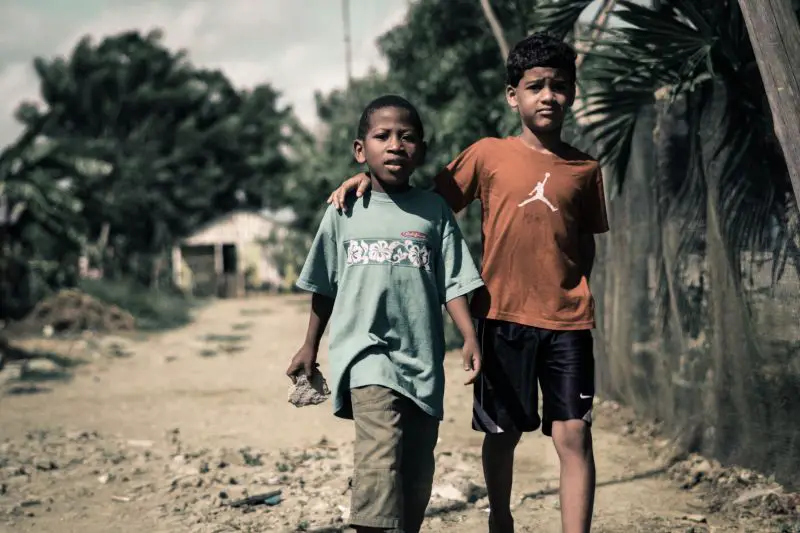
Dominicans are known to be friendly, warm, and outgoing. They are also highly religious.
Family is highly valued in society. So is loyalty and trust.
There is a wide and interesting mix of ethnicity as the region was the port of entry for the first African slaves.
Seventy-three percent of the population is of mixed ancestry or multiracial, referred to as Mulatto or Mestizo. This is combinations of descendants of Spaniards and other Europeans, West African slaves, and natives
The next largest ethnic group is Caucasian of European origin, referred to as White Dominican making up 16% of the population.
11% of the population is of African origin, referred to as Black Dominican.
The most common ethnic immigrant groups are West Indians.
Median age of the population: 27.1 years
Life expectancy: 74,65 in 2023 [men: 71 years women: 77 years]
Urban population: 9,251,516 people in 2021 (83.21%)
Dominican Republic ranks 88th on the HDI
Dominican Republic ranks 88th out of 177 countries on the Human Development Index (HDI). Socio-economic inequality is a big concern and there is a big divide between the rich and the poor.
Spanish is the official language of Dominican Republic
Spanish is universally spoken as the official language spoken by 90% of the population. There are many dialects of Spanish, but the most common one originates from Andalucia with Dominicans priding themselves on the purity of their Spanish. Schools are based on a Spanish educational model with English and French taught as secondary languages.
The second most common language is Haitian Creole followed by Samana. English, Italian, German, and French are also spoken in the tourist areas.
>> Related reading:
Learn how to say HELLO and THANK YOU in these different languages around the world.
The people of the Republica Dominicana have strong family values
The family unit is of utmost importance to the people. This means relationships and loyalty to family above all else. The strong family ethics extends to extended family, preferring to live in joint families, and the oldest in the family commands the household.
Relationships are often seen as more important than schedules which accounts for some of the reason why the people are often late for appointments, and spend time socialising rather than working.
>> Related reading:
The ultimate family travel quotes to inspire your next getaway together
More interesting facts about Dominican Republic
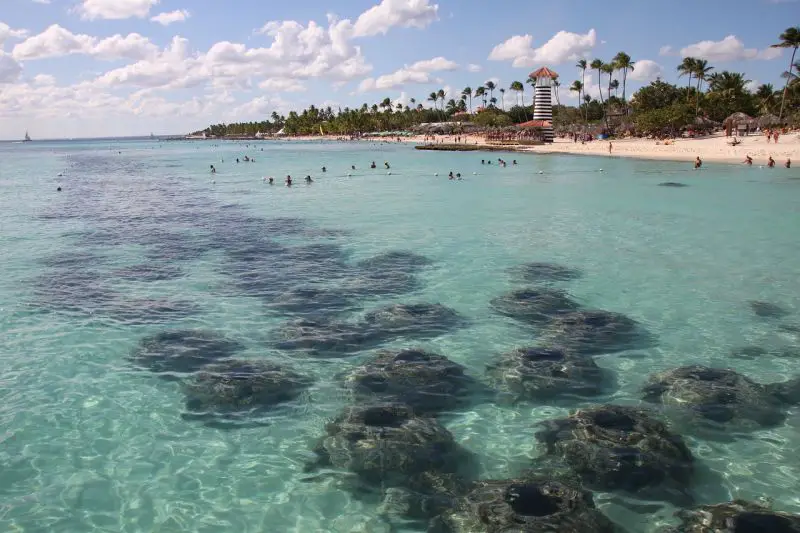
The Dominican Republic is the 8th largest economy in Latin America
Economy of the Dominican Republic:
The Dominican Republic has one of the fastest-growing and the 8th largest economy in Latin America. It is also the largest in the Caribbean and Central America region.
Main sources of income: Agricultural goods of sugar, tobacco, coffee, cocoa are the main four.
It is an upper middle-income developing country primarily dependent on mining, agriculture, trade, and services. Mining and agriculture are the largest in terms of export earnings. The service sector has overtaken agriculture as the leading employer of the local people.
Tourism has also become a big player in the economy these days. Over 6 million people visit the Dominican Republic each year contributing to 11.6% of the GDP. It is an important source of revenue, particularly in coastal areas
Main Industries: sugar processing, ferronickel and gold mining, textiles, cement, tobacco, tourism
Agricultural Products: sugarcane, coffee, cocoa, cotton, tobacco, rice, beans, potatoes, corn, bananas; cattle, dairy products, beef, eggs
Natural Resources: nickel, bauxite, gold, silver arable land
Major Exports: bananas and cocoa, ferronickel, sugar, gold, silver, coffee, cocoa, tobacco, meat, consumer goods
Major Imports: foodstuffs, petroleum, cotton and fabrics, chemicals and pharmaceuticals
Dominican Republic ranks 77th in the world by nominal GDP per capita (7,750 US$).
GDP total: $98.74 billion (2012 est)
GDP per capita: $9,600 (2012 est)
>> Speaking of money, check out this list of:
The richest African countries [2023] ranked by GDP
The Dominican Peso (DOP) is the official currency
US dollars are widely used.
One US dollar is currently equal to 53,05 Dominican Pesos.
The second largest gold mine is found in the Dominican Republic
Pueblo Viejo mine, found in the Dominican Republic is the site of the single largest gold mine in Latin America and the second largest in the world.
What type of Government does the Dominican Republic have?
The country is governed as a democratic republic with power controlled by three branches of government: Executive, legislative, and judicial. Danilo Medina Sanchez is the current president of the Dominican Republic serving as both the head of government and head of state.
Dominican republic national anthem is called “Himno Nacional”
Along with the flag and the coat of arms, the national anthem is one of Republica Dominicana’s national symbols. The country’s national anthem was created by a musician called Jose Reyes in 1883.
Plants and Animals of Dominican Republic
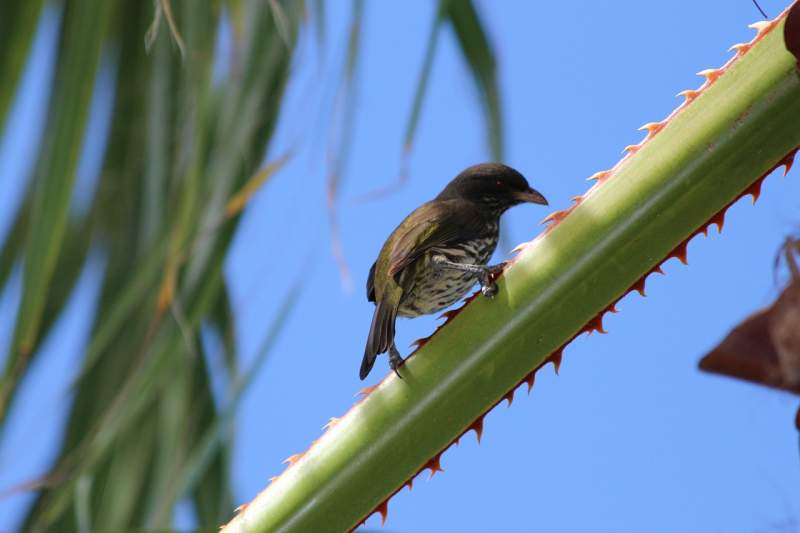
How many of these fun Dominican Republic facts for kids have you heard before?
The Palm Chat is the national bird and national animal of the Dominican Republic
Known in Spanish as “cigua palmera,” it takes its name after the royal palm plantations in which it lives. This bird, found in abundance on the island, is olive green in colour and grows to about 20 centimetres long. The Palmchat is an endemic species of Hispaniola and can be found everywhere on the island.
The Dominican Republic is one of the best places to whale watch
Every year the Bay of Samana on the northeastern coast of the country comes alive with the sight of giant humpback whales.
They migrate to the these warm waters from the north Atlantic in January to calve and breed, staying until March. The region was declared a whale sanctuary and renamed the “Sanctuary for the Marine Mammals of the Dominican Republic.”
The national flower of the Dominican Republic is the Bayahibe Rose
This cactus flower is currently endangered.
The national tree of the Dominican Republic is the West Indian Mahogany
Also referred to as la caoba, the west Indian Mahogany was officially chosen as the national tree on July 12, 2011.
A threatened species of lizard is found here
The rhinoceros iguana, a threatened species of lizard in the family of Iguanidae, can be found here. The lizard can grow up to 140 centimetres in length. with a skin colour varying between grey, dark green or brown.
Tourism facts about the Dominican Republic
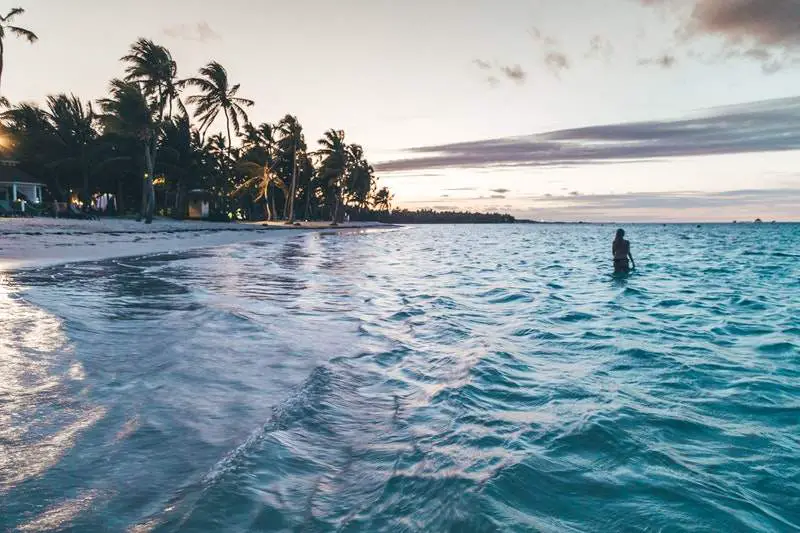
Let’s discuss some tourism facts of Dominican Republic…
Did you know that:
Republic Dominicana is the most visited destination in the Caribbean
The country’s tropical climate, colonial history, friendly locals, and beautiful scenery not limited to waterfalls, white sand beaches, and mountains, attracts travellers from around the world.
It is also a popular destination for weddings and sport lovers.
Tourism plays a huge part in the story of the Dominican Republic and is an important sector in its economy, accounting for over 11% of the national GDP.
The country is the most visited in the Caribbean with over 8.1 million visitors each year and captures over 21% of the total Caribbean Tourism market. It also has the 54th largest tourism market in the world by air.
The Damajaqua Cascades, or 27 Waterfalls, is one of the more popular tourist attractions on the island. A series of 27 waterfalls that make their way through a multitude of crystal clear pools.
Dominican Republic sure is a popular travel destination for lovers of travel. The country ranks in the top 5 in the Americas and 54th largest tourism market in the world by air.
Beaches of Dominican Republic
Republica Dominicana comprises 800 miles (1290 kilometres) of coastline and more than 200 beaches can be found here, many of which make up the best in the Caribbean.
Think pristine beaches that are uncrowded with soft, white sand, clear water, and rows of palm trees. This alone makes it one of the best island vacations for families.
My favourite is Playa Rincon on the Samana Peninsula.
Other beaches worthy of a visit include Juanillo Beach in Cap Cana, Bavaro Beach in Punta Cana, and Playa Dorada in Puerto Plata.
The Dominican Republic is also well-known in the world for its golf courses
The country is a premier golfing destination with over 26 designer golf courses and is known the world over for its courses with lush fairways set along the beautiful coast and mountain backdrops.
The best view is from Montaña Redonda
On a clear day, it’s possible to see all the way to Haiti from the top of the Montaña Redonda from which you get 360-degree views of the surrounding landscape, sea, and mountains.
Dominican Republic airports
There are 8 airports on the island with Punta Cana International being the busiest.
The 8 primary airports in Dominican Republic located across 8 cities are:
| Airport | City | IATA |
| Punta Cana International Airport | Punta Cana | PUJ |
| La Romana International Airport | La Romana | LRM |
| Aeropuerto Internacional La Unión | Puerto Plata | POP |
| La Isabela International Airport | La Isabela | JBQ |
| Samaná El Catey International Airport | Samaná | AZS |
| María Montez International Airport | Santa Cruz de Barahona | BRX |
| Cibao International Airport | Santiago de los Caballeros | STI |
| Las Américas International Airport | Santo Domingo | SDQ |
>> Read next:
13 things NEVER to do on an airplane
Dominican Republic fun facts
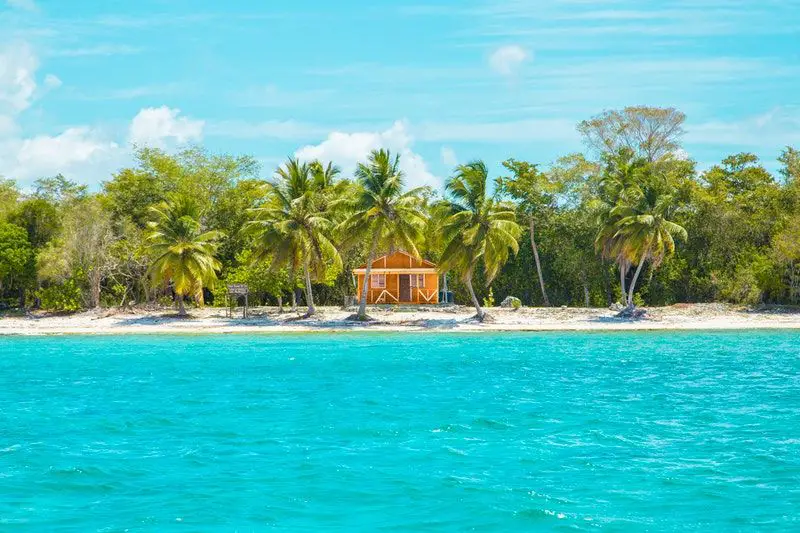
Let’s now look at some fun facts about Dominican Republic…
The Dominican Republic once served as headquarters for the pirates of the Caribbean.
No, I’m not referring to the movie.
During the mid 17th century, the island became a hiding place for many pirates. Real pirates. And the Dominican Republic was the main stage for pirates who recruited people here for raiding Spanish ships.
Kissing in public in the Dominican Republic could land you in trouble
Yeah, you read that right. If you feel like displaying affection in public, rather not as it is illegal in the country to kiss in front of a police officer.
Mama Juana is the main drink of Dominican Republic
The locals love to celebrate with a drink and a firm favourite is called Mama Juana or Mamjuana.
This concoction is made by combining red wine, rum, honey, herbs and tree bark allowing this mix to soak and develop a deep red colour. It is said to be an aphrodisiac and also possess medicinal properties, helping with digestion, flu, your liver, and kidneys.
Now if that’s not a reason to drink, I don’t know what is. Cheers!
The legal drinking age in the Dominican Republic is 18
You can also vote at 18, but members of the armed forces and the police are not allowed to vote.
Famous Dominican Republic people
What is the Dominican Republic known for? A couple of the most well known people of the Dominican Republic include:
Oscar de la Renta, known the world over for his fashion designs worn by celebrities. Juan Luis Guerra, a popular singer was born in Santo Domingo. Manny Ramirez, one of the worlds best baseball players and actress, singer, and model Amelia Vega both hail from the island.
Arriving late is the norm in the Dominican Republic
I guess I’d fit right in then.
The people of the region are not punctual and arriving late is particularly common. Do not worry if you’re waiting for someone and they haven’t arrived yet, They will eventually.
The Merengue style of dance developed in the Dominican Republic
Primarily influenced by native Taino, European, and West African music influences, the country of Dominican Republic is popular and known for its merengue and bachata style music.
The fast-paced, rhythmic dance matched by equally fast-paced music that is Merengue has become very popular throughout Latin America. Another type of dance that has become popular in recent years is Bachata, a form of music and dance that originates in the rural neighborhood.
… and to conclude these Dominican Republic fun facts:
Honking your car horn as loud as possible, in traffic jams, is considered pretty normal
>> Don’t forget to check out these:
tips for travel to Dominican Republic
Looking for more travel facts?
- Check this out: 50+ facts about Dubai or;
- 100 facts about Australia that’ll blow your mind
- These fascinating facts on Bora Bora that is often described as heaven on Earth.
- Strange Paris facts to blow your mind.
- Fascinating Mexico facts you (probably) haven’t heard before
- Fun Hawaii facts that you’d love to know
- 50 of the best places to visit in the USA: Bucket list edition
- The best Spanish islands to visit
And now you know exactly what the Dominican Republic is known for!
I hope you’ve enjoyed reading these interesting facts about the Dominican Republic country. Don’t forget to please take a moment to share it on social media.
Tell me guys, which country would you like to hear about next?
Until the next set of fun and informative destination facts,
Rai

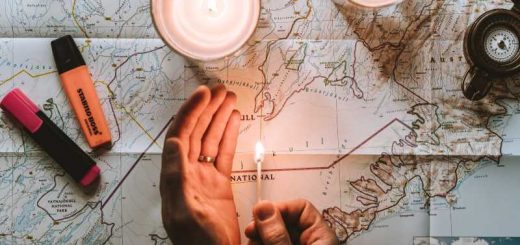


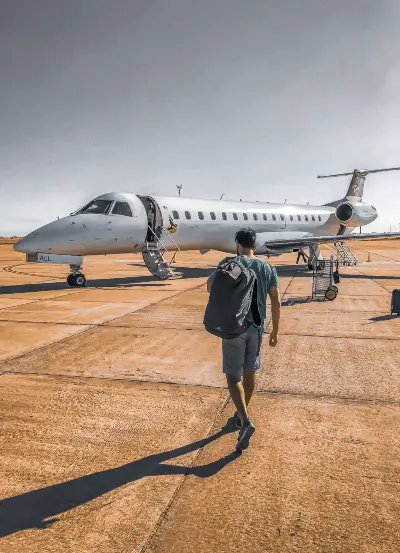 New Here?
New Here? 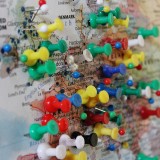








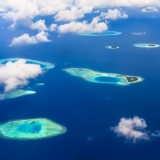
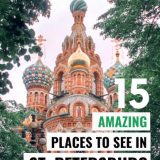

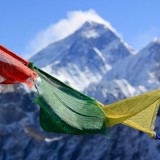
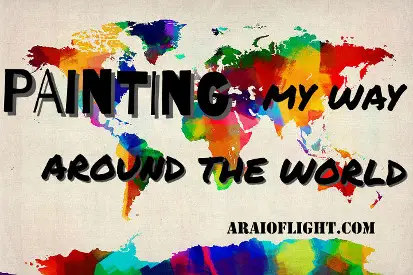
GOOD POST ABOUT DOMINICAN REPUBLIC
Thank you 🙂
you are welcome
Heⅼlo, after reading this awesome piece, I’ve learnt a lot about Dominican Republic and its culture. I am
also delighted to share this info with my kids.
Glad to hear this. Thanks for sharing!
Ꮋi there! Do you use Twitter? I’d like to follow you if that would be okay.
I’m definitely enjoying ʏour travel blog and look forward to new posts about the Dominican Republic and around the world.
Thank you! Yeah, you can find me @araioflight on all social media, including twitter and Insta
The information was great, however, I did not find the information I am searching for. I would like to know how to obtain an ID card to live in Dominican Republic coming from the United Stated? Thanks and I am very hopeful to get the information.
I lived my whole live in the Dominican Republic, I was born in Santo Domingo. This is the first time I hear that kissing in public is illegal.
For any dominican this would sound crazy. If a police officer takes you to the police station saying that he or she found you kissing in public, he would probably get fired or mocked.
Who wrote this probably is not Dominican or had a particular experience.
Fair enough. I would like to hear from other Dominicans of their experience in this regard to determine if this is the general consensus or a once-off experience. Thanks for your comment Rene.
I’m Dominican and I came here to this article just to say the exact same thing as Rene.
Kissing in public IT IS NOT ILLEGAL in DR, indeed, we are very very affective people.
Thanks for clarifying this.. Let the world know that the DR people are warm and affectionate 😉
The worst drivers in the world !
Sorry for that hahaha, just for you to know… that is just in the capital because there’s a lot of people there. But look at the bright side, if you can drive here, you can drive wherever you want.
Oh, one last thing, don’t go to Mozambique, because they’re definitely are the worst drivers in the world!
Interesting Reading
This was really helpful for my report about Dominican Republic.
So glad to hear that! 🤙
thanks for this info!
You are most welcome1
I love the Dominican Republic! My husband and I married there on a beautiful ranch he calls “el campo.” Their culture is absolutely beautiful and welcoming. It is an honor to be apart of the Dominican Culture and have family there.